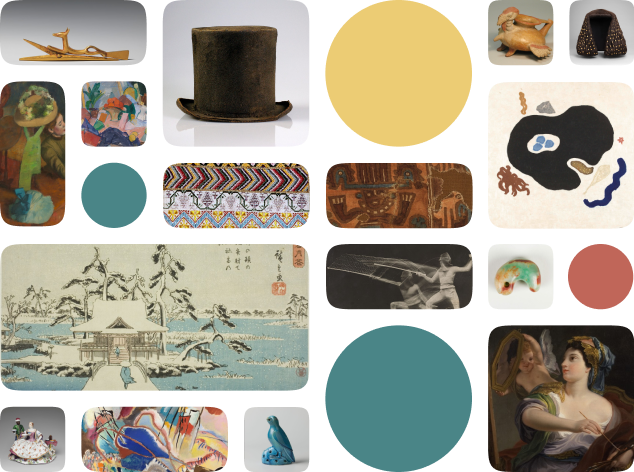Goddess Durga slaying the demon Mahisha
Creator Name
Cultural Context
Date
Source
About the work
This 12th century icon of the goddess Durga, made by Pala-Sena dynasty artists, comes from current-day Bangladesh. Pala-Sena artists created many renowned bronze sculptures. The majority of them depicted Hindu gods, the Buddha, or bodhisattvas. The goddess Durga is a ferocious embodiment of Parvati, Shiva’s consort. Here, Durga is Mahishasuramardini, the slayer of the asura, or demon buffalo Mahishasura. When the male gods failed to kill Mahishasura, they lent her their weapons and she succeeded. Devotees particularly in Bengal and eastern India celebrate this occasion annually as Durga Puja. Some current-day Dalit and Adivasi (tribal/Indigenous) South Asian people consider Mahishasura a god or ancestor, and view Durga as a symbol of upper-caste dominance. This ten-armed copper version of the icon shows Durga wielding the weapons and attributes of her fellow gods. Those include a conch, sword, and shield. Durga stands triumphantly over the asura. She wears protective bands on her wrists.
Metropolitan Museum of Art Object Description
Figure
Work details
"--" = no data available
Title
Creator
Worktype
Cultural Context
Material
Dimensions
Technique
Language
--
Date
Provenance
Style Period
Rights
Inscription
--
Location
Source
Subjects
Topic
Curationist Metadata Contributors
All Works in Curationist’s archives can be reproduced and used freely. How to attribute this Work:
Unknown, Goddess Durga slaying the demon Mahisha, circa 12th century, Bangladesh, northern Bengal, possibly Varendra region. Metropolitan Museum of Art. Represented through Mahishasuramardini, this female deity triumphantly wields weapons from her fellow gods. Public Domain.
Help us improve this content!
Let our archivists know if you have something to add.
Save this work.
Start an account to add this work to your personal curated collection.
